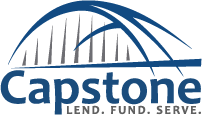Never Settle for Dutch Interest if You Don’t Have To
Dutch interest (AKA "full boat") loan structures cost more than non-dutch (AKA stage funded). Is the perceived borrower "security" really worth it?
Understanding differences in interest structures will significantly change your project’s profitability. Dutch interest, also known as “full boat” interest, is one such term that every real estate investor should be aware of—especially when applying for construction loans that fund in stages.
In this article, we’re exploring what Dutch interest means, how it compares to non-Dutch interest (also referred to as "stage funding"), and exactly how choosing the right loan structure could save you thousands in interest.
Photo by Shane Aldendorff
Defining Dutch Interest (Full Boat Interest)
Dutch Interest, sometimes referred to as "full boat interest", is a type of interest structure on a loan in which the borrower pays interest on the full loan amount from the day the loan is issued (regardless of how much of the loan has actually been disbursed or used).
This is especially relevant to construction loans because they typically fund in stages. Stage funding is when a part of the loan will be disbursed to you at certain checkpoints during your projects. You may receive 20% of your loan upfront for foundation and framing, then 20% later for electrical and plumbing, and so on.
Example: In a Dutch interest scenario, if you take out a $1 million loan with a 12% interest rate for a 12-month construction project, you’ll be charged interest on the entire $1 million for the entire term, regardless of when you access the funds. Over the year, you would pay $120,000 in interest ($1 million x 12%), whether you use the full amount upfront or in stages.
What is Non-Dutch Interest?
Non-Dutch interest (also called “stage funding”), requires the borrower to only pay interest on the amount of the loan that has been disbursed or drawn until the current point in time. It’s most relevant to loans that disburse only parts of its total amount on a schedule, such as with a construction project that needs more money as phases of the project progress.
Example: In a non-Dutch (stage funding) loan, using the same example of a $1 million loan at 12% interest for 12 months, you would only pay interest on the portions of the loan that have been disbursed. If $250,000 is disbursed in the first quarter, you’re only paying interest on $250,000 during that period (not the full loan amount). As additional funds are drawn, you start paying interest on the new total, but only for the duration those funds are used.
How Much Can You Save with Non-Dutch Interest?
You can save tens of thousands in interest by opting for a non-dutch structure rather than dutch. If you draw $250,000 each quarter for the life (12 months) of the loan (a $1M loan), your total interest paid would be $75,000 instead of the $120,000 charged under a Dutch interest model in which you pay 12% on $1M.
That’s nearly $45,000 saved just by opting for a non-Dutch loan structure.
Photo by Pixabay
Why Do Lenders Charge Dutch Interest?
From the lender’s perspective, Dutch interest reduces risk by ensuring they receive full interest payments, even if the borrower doesn’t utilize all the funds immediately. It’s a way for lenders to lock in their profits. If a borrower is deemed higher-risk, a lender could theoretically insist they pay dutch interest.
How Common is Dutch Interest?
Generally speaking, dutch interest is not as common as non-dutch interest.
When it does occur, dutch interest is more common in construction loans and rehab loans. You’re more likely to come across dutch interest with a private lender rather than a bank. Be aware that dutch interest isn’t structured the same for every lender.
>> Read more: Private Lenders vs Banks vs Hard Money Lenders
Even as a private hard money lender, Capstone Capital Partners never charges dutch interest. It’s saved our borrowers millions.
Is There Any Advantage to Dutch Interest for Borrowers?
Dutch interest itself isn’t an advantage to borrowers, but it can come with added security. Here’s how: with Dutch loans, the entire loan amount is placed in an escrow account upfront, ensuring that funds are available when needed. Non-dutch interest loans generally do not place the full loan amount into a secured third-party escrow account.
Having the full loan amount in escrow right away reduces the risk of not having funds available during the project, which can occur in rare cases with non-Dutch loans. It’s theoretically possible that a lender couldn’t fund draws due to liquidity issues. But if this were to happen even one time, a lender’s reputation would take a massive hit.
Whether the security of a dutch loan is worth the large amount of additional interest is up to the individual borrower. The vast majority of borrowers would not consider the tiny amount of added security to be worth the cost, especially if the lender they’re working with is trusted and well established.
Photo by Brett Sayles
Non-Dutch (Stage Funded) Loans Save Borrowers Millions
Capstone Capital Partners never charges dutch interest on any of our loans. We fund in stages so you only pay for what you’re using. This non-Dutch structure has saved our borrowers millions of dollars, and we’ve never failed to fund draws when borrowers need them.
>> Read more: Capstone’s Borrower Testimonials
Let’s explore your next project together – even if you’re not ready to purchase yet. We want to establish a relationship so you’re funded fast when the time comes! Tell us about yourself and we’ll reach out!



